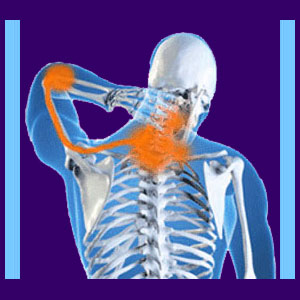
Brachial plexus pain is usually experienced in a group of neurological structures formed from the nerve roots which exit the spine between vertebral levels C5 and T1. These nerves, called the brachial plexus, are responsible for providing motor and sensory abilities for much of the upper body, including the neck, upper torso, shoulder, arms and hands. The brachial plexus also contains some major vascular tissues, including the subclavian artery and subclavian vein.
The causative mechanism for pain is thought to exist when one or more of the muscles in the upper back or shoulder impinge upon the nerves, the blood vessels or both. This type of muscular compression can induce terribly painful symptoms regionally and may become a chronic health crisis if left untreated.
This essay details pain experienced in the brachial plexus, most often diagnosed as thoracic outlet syndrome.
Brachial Plexus Pain Conditions
The most common diagnostic conclusions involving the structures of the brachial plexus include:
Thoracic outlet syndrome is characterized by structural compression of the nerve or vascular structures in the brachial plexus, most commonly by the scalene muscles. Neurological forms and vascular forms of the condition may have different symptomologies. Typically, both nerve and vascular tissue testing is needed in order to refine this theory into a definitive diagnosis.
Pinched nerve roots in the spine might affect the brachial plexus structures as they serve the neurological needs of their target destinations. In some cases, a compressive neuropathy in the lower cervical or upper thoracic region might be linked to symptoms in the brachial plexus.
Mechanical back pain might affect the cervical spine and create pain which seems to come from the brachial plexus nerve structures. Instead, these cases may involve the small nerves in the facet joints.
Muscular back pain might be serious and debilitating in the upper back and may exist over the brachial plexus, even when the nerve tissues are not affected to any large degree.
Help for Brachial Plexus Symptoms
The brachial plexus is a complicated network of nerves and vascular tissues which can be the source of pain from a number of possible anatomical causes. However, most of these causations respond well to appropriate treatments and should heal completely in a matter of weeks.
Long-term chronic back pain or chronic neck pain may the result of an ischemic process, not a structural compression issue. Most of these oxygen deprivation back pain conditions are due to life stressors, not muscular or spinal abnormalities.
Be sure to consider all the possible causative and contributory factors which may be sourcing your suffering prior to seeking treatment for any. Being that diagnostic eclecticism is so common with pain in the brachial plexus, it may be best to seek several diagnostic opinions from a variety of different types of care providers.
Once you have heard all the theories, hopefully you will be convinced by the one with enough factual evidence to support it. This is the best way towards successful resolution of your upper thoracic dorsalgia.




